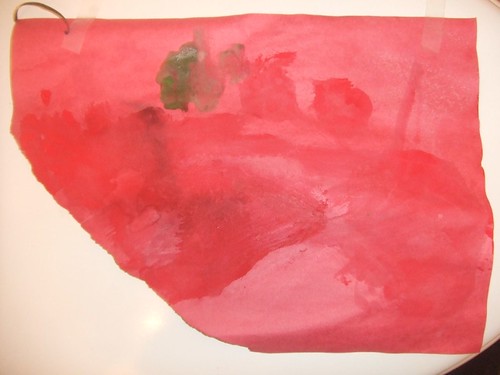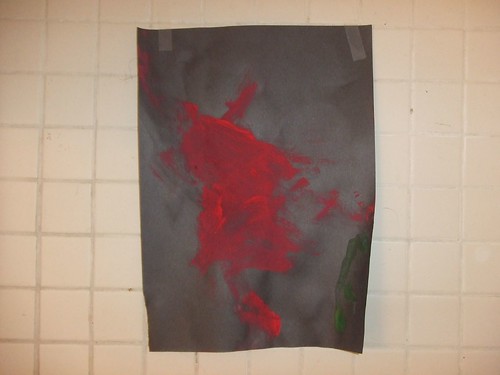
As you can see, he begins with the same monochromatic canvas approach that attracted his sister when she was starting out, and in fact gave the NCAftEFA its international reputation. But look more closely at what Joey has done. He has applied so much watercolor to the construction paper that it bent and curled as it dried, adding a three dimensionality to the work that you just didn't see in earlier pieces from this genre. Those works could be textured, but they didn't really achieve the spatiality that Joey has produced.
Also note that he came independently to the idea of filling the paper with paint edge to edge, whereas Caroline learned it from her classmate at the NCAftEFA, X. This perhaps accounts for his willingness to move the genre forward, including the daring use of sharpie in the lower center part of the page.
But the most profound aspect of this work is how it is conceived. Caroline's earlier work was aleatoric art and action painting. What Joey is doing is representational. That's right. When the artist was asked about the meaning of his work, he said "It T-rex, rawr."
Could this green bent surface really represent a prehistoric beast? Consider the later work in the series.

This picture, too, was described by the artist with the words "It t-rex rawr." Now we can see that the insistence of the color is meant to capture the ferocity of the beast. But all that pales compared to the final work in the t-rex series.

Is that a blood splatter? Has the camera panned away from the carnage of the T-rex consuming the triceratops? It is for the imagination of the viewer to decide.

No comments:
Post a Comment